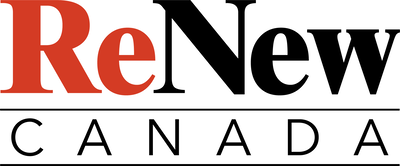RC121 NovDec 2025 - Magazine - Page 10

LEADERSHIP
and Public-Private Partnerships in Canada (2019), the 昀椀rst
Canadian-authored book devoted entirely to the 昀椀eld.
Murphy’s career has given him a unique vantage point to
view how the Canadian P3 sector has grown and matured.
The early 2000s, he notes, were about experimentation—
simple build-昀椀nance projects, particularly in hospitals,
where the province could test the concept with minimal risk.
“It was almost like training wheels,” he says. “Everyone was
learning—governments, contractors, lenders.”
ability payment” model that has dominated Canada’s market.
“Debt lowers the cost of capital,” says Murphy. “If you can
design a project with predictable revenues—like rail or energy
transmission—then lenders can play a constructive role again.”
He is quick to note, however, that 昀氀exibility and expertise
are paramount. “You need governments willing to be adaptable, and you need people who can evaluate complex risk and
value-for-money equations project by project and that’s not
easy. The private sector attracts a lot of the talent, so governments have to be smart about building and retaining
their own.”
With Canada entering a period of heavy public
investment he sees both opportunity and challenges ahead. “There’s going to be a lot of work. The
challenge will be having enough skilled labour and
enough project management capacity to deliver it.”
Re-setting the Gordie Howe Bridge
Murphy’s belief in partnership over position was
put to the test during his tenure as chair of the Windsor-Detroit Bridge Authority, which oversees construction of the Gordie Howe International Bridge—
one of the largest federal infrastructure projects in
Canadian history.
When he joined the board, the project was struggling.
COVID-19 had upended supply chains, costs were escalating,
and trust between the public agency and its private consortium had deteriorated. “It had a public and a private, but no
partnership,” Murphy says. “Everyone was focused on the
contract, not the project.”
His approach was to “put the partnership back in public-private partnership.” That meant re-establishing trust,
negotiating new timelines and budgets, and refocusing all
sides on a shared goal. “You can’t just sit there saying, ‘Clause
7A says this is your problem.’” That’s how projects die.”
The reset worked. The bridge is now nearing completion,
scheduled to open for tra昀케c in late 2025. “When both sides
walk away slightly unhappy, it usually means the deal was
fair,” Murphy says wryly. “It’s going to be a signi昀椀cant piece of
public infrastructure, and I’m proud to have played a part.”
His connection to the project, he admits, runs deep. “The
irony is, I was originally a lawyer for the losing bidder,” he
laughs. “Then I was hired as a facilitator to improve relations
between the parties, then appointed chair of the authority, and
now I work for Aecon, which is part of the private consortium.
The bridge haunts me—but in a good way.”
“Breaking up megaprojects allows
more competition and reduces integration risk.
It’s a way to keep the price down while getting
the best expertise for each part.”
The model’s success led to rapid expansion. “Suddenly
projects were actually 昀椀nishing on time and on budget,”
Murphy recalls. “So, governments started giving more
and more to Infrastructure Ontario.” But as projects grew
more complex—particularly in the transit and healthcare sectors—the old risk-transfer formulas came under
pressure. “You can’t just dump all the risk on the private
sector,” he says. “It worked when it was a square building
on a square lot. It doesn’t work when you’re tunnelling
through a city full of unknown utilities.”
This realization has pushed the industry toward new
models such as progressive design-build and alliance
contracting, which emphasize collaboration over confrontation. “Early contractor involvement is good for
everyone,” Murphy argues. “It keeps prices realistic and
prevents the kind of disputes that drove some major players out of the space.”
He points to the fragmentation of large transit projects
as another positive trend. “Breaking up megaprojects
allows more competition and reduces integration risk,”
he says. “It’s a way to keep the price down while getting
the best expertise for each part.”
The next era of nation-building
Looking ahead, Murphy sees a complex but promising
landscape for Canadian infrastructure delivery. “P3s were
never meant to be the only model,” he stresses. “At their
peak, they were maybe 18 per cent of Ontario’s total infrastructure program. The real question is always: what’s
the right model for the asset you’re building?”
One of the biggest evolutions, he believes, will be
around Indigenous equity participation in infrastructure—
particularly in projects tied to critical minerals, defense,
and trade. “To get social license, you need partnership,” he
says. “Providing equity to Indigenous communities isn’t
just the right thing to do—it’s good business.”
That shift may also revive certain P3 variants, especially
those with clear revenue streams, as opposed to the “avail-
10—RENEW CANADA – NOVEMBER/DECEMBER 2025
Infrastructure as a calling
Murphy’s move to Aecon in 2024 brought his career full
circle—back to the industry that 昀椀rst linked his legal, political,
and policy interests. “It’s a great company, and a great sector,”
he says. “We never seem to have enough infrastructure in this
country, and once again it’s an area people want to invest time
and money in.”
His philosophy of leadership, forged in both politics and
project delivery, remains grounded in pragmatism and collaboration. “Whether you’re in government, law, or construction,
the principle is the same,” he says. “You look down at the
piece of paper, but you also look up at the horizon. You can’t
just react—you have to lead.”
RENEWCANADA.NET